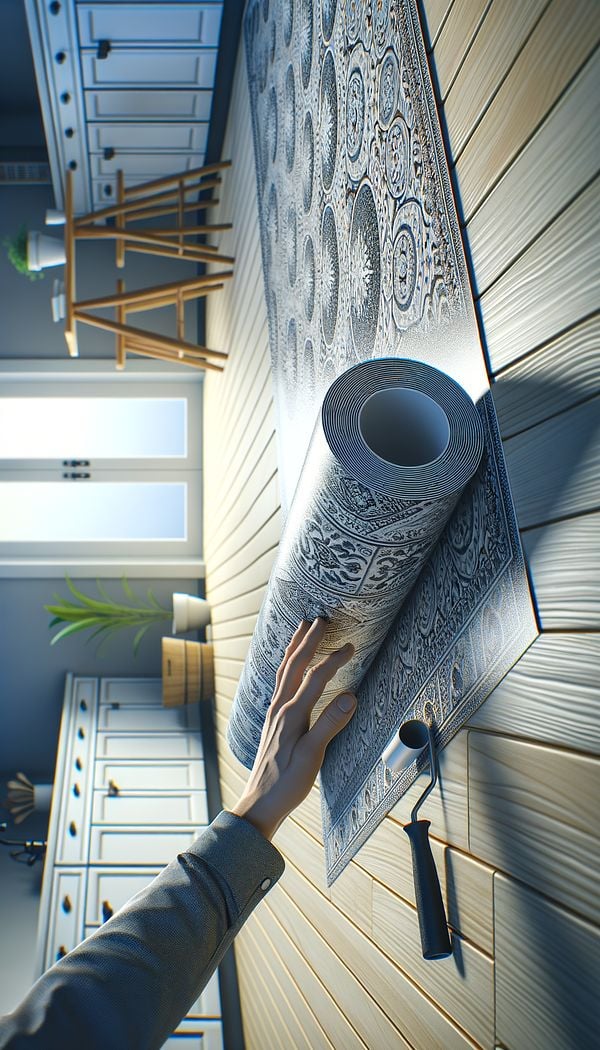What is PVC - Polyvinyl Chloride?
PVC, or Polyvinyl Chloride, is a versatile synthetic plastic polymer used extensively in interior design.
Description
PVC, short for Polyvinyl Chloride, is a type of plastic that’s widely recognized for its durability, ease of use, and versatility. This synthetic material is produced through a polymerization process of vinyl chloride monomers, resulting in a lightweight, yet robust plastic. PVC comes in two basic forms: rigid (sometimes abbreviated as uPVC) and flexible. This flexibility in form makes PVC an invaluable material in various applications within the field of interior design.
The use of PVC extends across multiple areas, from construction elements like window treatments and wall treatments and finishes, to decorative objects and even furniture. Its ability to mimic the textures and appearances of more natural materials, such as wood, metal, and stone, adds to its popularity. Additionally, PVC's water-resistant properties make it highly suitable for moist environments, making it a preferred choice for bathrooms and kitchens.
Moreover, PVC’s relatively low cost, combined with its longevity and minimal maintenance requirements, positions it as an attractive option for both design professionals and homeowners seeking cost-effective yet stylish solutions. Nevertheless, while PVC is celebrated for its practical benefits, it is also subject to scrutiny due to environmental and health concerns related to its production and disposal.
Usage
PVC is commonly used in the interior design field in various applications including window frames, shower curtains, flooring such as vinyl tiles, wall panels, and furniture coverings. It’s also popular in creating outdoor furniture due to its resistance to weather conditions. In commercial settings, PVC is often used in signage, office partitions, and in the manufacturing of display stands.
FAQs
-
Is PVC durable?
Yes, PVC is recognized for its durability. It is resistant to corrosion, chemicals, and water, making it a long-lasting option for both indoor and outdoor applications.
-
Can PVC be recycled?
PVC can be recycled, although it is more complex to process compared to other plastics. Recycling PVC helps mitigate its environmental impact by reducing the need for new raw materials and decreasing waste in landfills.
-
Is PVC safe for home use?
Generally, PVC is considered safe for home use in finished products. However, concerns exist about the release of volatile organic compounds (VOCs) during its production and disposal. Choosing low-VOC PVC products and ensuring proper ventilation in newly renovated spaces can help mitigate these concerns.
Practical Application
When incorporating PVC into your interior design projects, consider its versatility and durability to create cost-effective and functional spaces. Opt for low-VOC PVC products to minimize health risks, and explore recycling options for any waste. Additionally, despite its resistance to elements, regular cleaning and maintenance can extend the lifespan of PVC-made features, ensuring their longevity and appeal over time.
-
Decorative Objects240 articles
-
Materials & Textiles360 articles
-
Construction & Building86 articles
-
Wall Treatments & Finishes157 articles
-
Sustainability & Eco-Friendly Design69 articles
-
EggshellEggshell is a type of paint finish that has a soft, low-sheen appearance.
-
ChinoiserieChinoiserie is a style inspired by Chinese artistic influences.
-
Cottage StyleCottage Style is a charming, cozy, and unpretentious design ethos inspired by quaint country cottages.
-
Statement PieceA bold, distinctive item that draws attention and sets the tone for a space.
-
BalusterA baluster is a small, vertical post that supports the handrail of a staircase, balcony, or railing.
